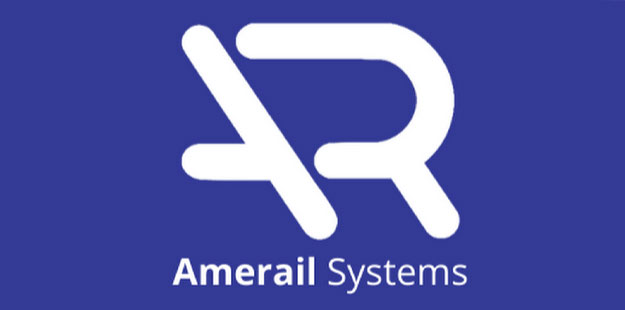What is a Hotel CapEx Budget?
Every year, hotel owners set aside funds for capital expenditures, (or CapEx). These are investments that improve or extend the life of a hotel and its physical assets. CapEx budgets typically take into consideration the costs of renovations, Property Improvement Plan (PIP) requirements, and major system upgrades, ensuring the property remains competitive and continues to meet evolving guest expectations.
It is important to distinguish CapEx from OPEX (Operating Expenses). While OPEX covers daily operational costs such as staff wages, cleaning, utilities, and routine maintenance, CapEx represents long-term investments. Both are critical, but CapEx is the foundation for the sustained competitiveness and profitability of a hotel.
With shifting market conditions, 2026 is shaping up to be a pivotal year for CapEx planning in the hotel industry.
Industry Outlook and Market Conditions
To understand why CapEx planning is so important, it helps to look at current industry trends. These industry conditions often shape how different types of hotel owners approach CAPEX budgeting. Independent hotel owners often treat their properties as long-term or generational assets, making reinvestment a priority. Larger ownership groups may be more cautious due to complex decision-making structures and the need to demonstrate predictable ROI.
One approach that has gained traction is the “phasing approach.” This involves spreading investments across smaller projects rather than completing a full renovation at once. While this can help manage budgets, it may only address surface-level issues and leave underlying problems unresolved. For example, replacing an HVAC system without addressing drafty windows may increase energy costs and reduce ROI.
It is worth noting that this “phasing approach” differs from construction or renovation phasing. In renovation terms, “phasing” means planning work strategically to minimize guest disruption and eliminate downtime, not breaking a project into smaller financial investments.
Why 2026 Is a Critical Year for Hotel CapEx
According to the HOTEL Yearbook 2026, the industry expects a wave of hotel renovations in 2025 and 2026, driven by stabilized supply chains, a recovering economy, and evolving guest expectations.
Many properties renovated during the early pandemic period are approaching the 5 to 7-year refresh cycle. Projects completed and PIPs served at that time often faced scope compromises or delays due to cost and supply challenges.
This makes 2026 a year when many hotels will need updates to remain competitive.
Many hotels had to defer projects during the pandemic and as we all know, branded properties with delayed PIP fulfillments will eventually be unable to compete. Those branded hotels that deferred PIP fulfillment will need to act quickly. But brands seem to be increasing flexibility to account for delays due to supply chain issues, inflation, and even lingering challenges from the pandemic.
With brands offering more flexibility around PIPs, 2026 presents an ideal opportunity to allocate revenue toward larger renovations that may have been previously deferred.
Partnering with an experienced renovation team is the key to successfully negotiating PIPs and maximizing ROI. With their expertise, you can gain accurate project quotes, which are essential for determining how much to set aside in your CAPEX budget.
Financial Landscape
Economic uncertainty and inflation continue to influence how hoteliers approach their CapEx budgets. No business is immune to inflation, but hoteliers who plan strategically are well positioned to turn those challenges into growth.
Historically, owners allocated about 4% to 5% of revenue to major upgrades and a similar amount to FF&E, maintenance, and repairs. A 2023 industry study found that current benchmarks have shifted:
- About 8% of revenue is now typically allocated to major upgrades & renovations.
- An additional 15% to 25% is recommended for FF&E, maintenance, and repair reserves.
Setting realistic budgets and planning ahead can help prevent year-end shortfalls and ensure projects can be completed as intended.
Balancing Brand Standards with Budget Reality
Meeting brand standards while maintaining a budget is always a challenge. A strong renovation partner can help identify high-impact updates, unforeseen issues, and even provide value-engineered solutions that deliver measurable ROI.
Sometimes even targeted improvements such as refreshed signage, updated paint palettes, upgraded landscaping, or enhanced outdoor amenities can significantly elevate a property without requiring full-scale renovations.
Post-pandemic, select-service and extended-stay brands have expanded options, prompting owners to be more intentional with how they use their spaces. Many are shifting CapEx priorities to focus on areas that directly impact guest experience, operational efficiency, and can provide a competitive advantage.
Priorities We’re Seeing from Brands/Hoteliers
Based on current trends, hoteliers and brands are prioritizing:
- Wellness and lifestyle amenities such as fitness centers, yoga spaces, and spa upgrades.
- Modernized meeting and event spaces to attract business travelers and conferences.
- Social lounges and flexible communal areas that encourage guest interaction and extend dwell time.
- Self-service dining and grab-and-go markets to provide convenience for guests while helping manage rising labor costs.
- Enhanced outdoor spaces and landscaping to improve first impressions and overall guest experience.
- Unique experiences and design that makes stays memorable, like locally inspired decor, art, or creative spaces that give guests something special to enjoy.
Focusing on these priorities allows owners to balance guest expectations, brand standards, and ROI, ensuring their CapEx investments have a meaningful impact on both revenue and long-term property value.
The Amerail Approach to CapEx for 2026
At Amerail Systems, we recommend beginning CapEx planning with a 5 to 10-year capital plan. This long-term outlook ensures each investment aligns with your property’s vision and positions you for sustained competitiveness.
Working with an experienced renovation partner provides clarity on materials, labor, and timelines. This allows you to build realistic budgets and avoid unexpected costs.
Early coordination with brand representatives can also help in anticipating changes to PIP requirements, keeping your property compliant and ahead of the curve.
How Hoteliers Can Determine 2026 CapEx Budgets for Renovations
- Assess Property Conditions – Review guest rooms, exterior EIFS conditions, public areas, back-of-house spaces, and FF&E. Identify items nearing end-of-life or that negatively affect guest experience. Examining any not-so-positive reviews left by guests can be a helpful insight into what areas of the hotel may need updated.
- Understand Brand Requirements – Factor in PIPs and brand standards, noting deadlines and flexibility.
- Evaluate Market Conditions – Consider competitor properties, guest expectations, and economic factors like inflation and material costs.
- Use Financial Benchmarks – Industry guidance suggests around 8% for major upgrades and 15–25% for maintenance, repairs, and FF&E. Adjust based on property age and scope.
- Prioritize by ROI – Rank projects by impact on guest satisfaction, revenue, and operational efficiency. Address high-impact items first. (High impact items can range from guest rooms and public spaces, to smart TVs and HVAC upgrades)
- Partner with Experts – Experienced renovation partners provide accurate cost estimates and are able to highlight hidden costs or opportunities.
- Develop a Long-Term Plan – A 5–10 year CapEx roadmap helps anticipate recurring refresh cycles and future brand requirements.
- Review and Adjust Annually – Track spending versus budget and update future allocations based on outcomes and market changes.
Conclusion
As 2026 approaches, CapEx is more than a financial exercise – It is a strategic tool to secure your hotel’s future. With rising guest expectations, evolving brand standards, and a projected surge in renovations, thoughtful capital investment has never been more important.
Whether through full-scale renovations or targeted upgrades, a clear CapEx strategy and the right renovation partner can transform today’s challenges into tomorrow’s growth opportunities.
Planning ahead, prioritizing investments, and executing strategically will help ensure your property remains competitive and appealing for years to come.
Get in touch with the experts at Amerail Systems to get started on your renovation: Contact Us




